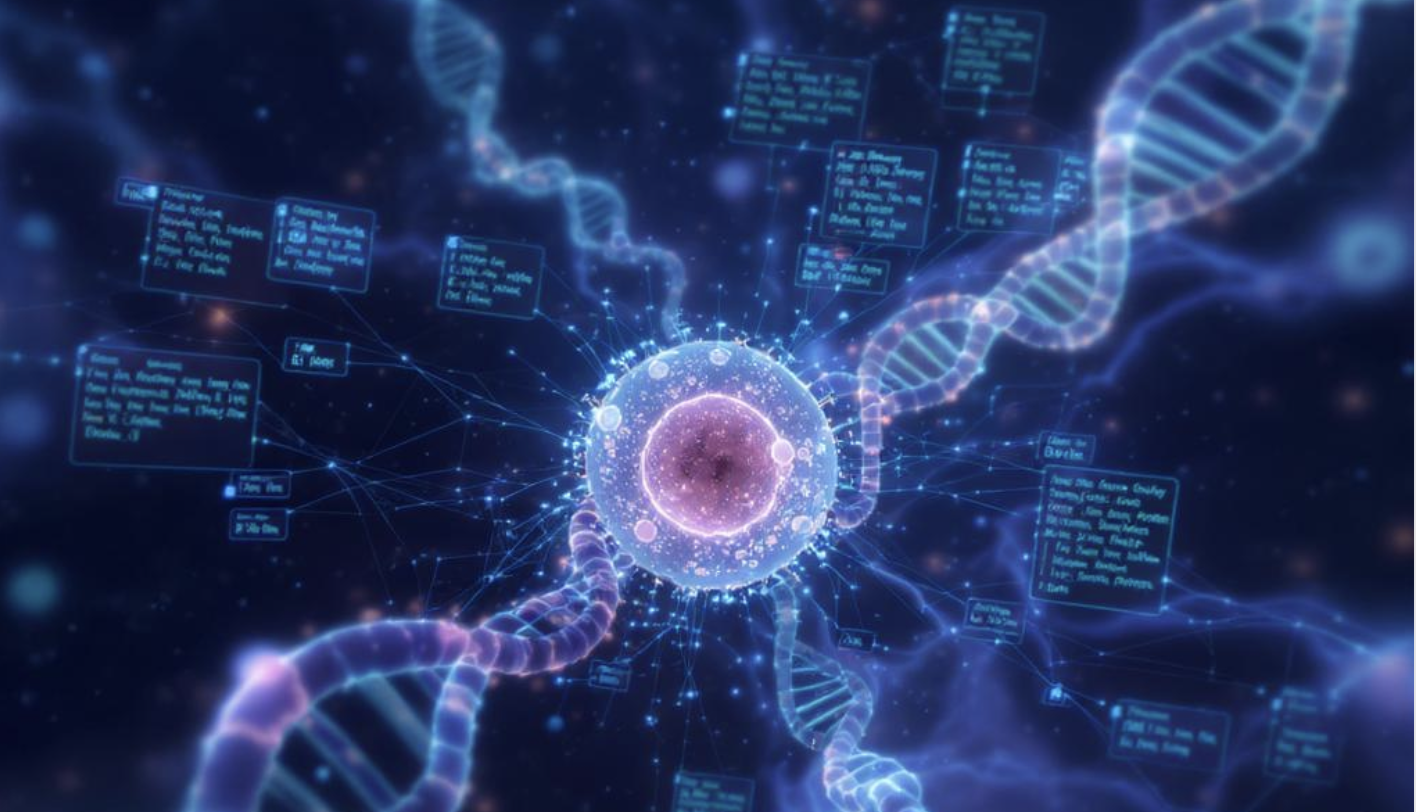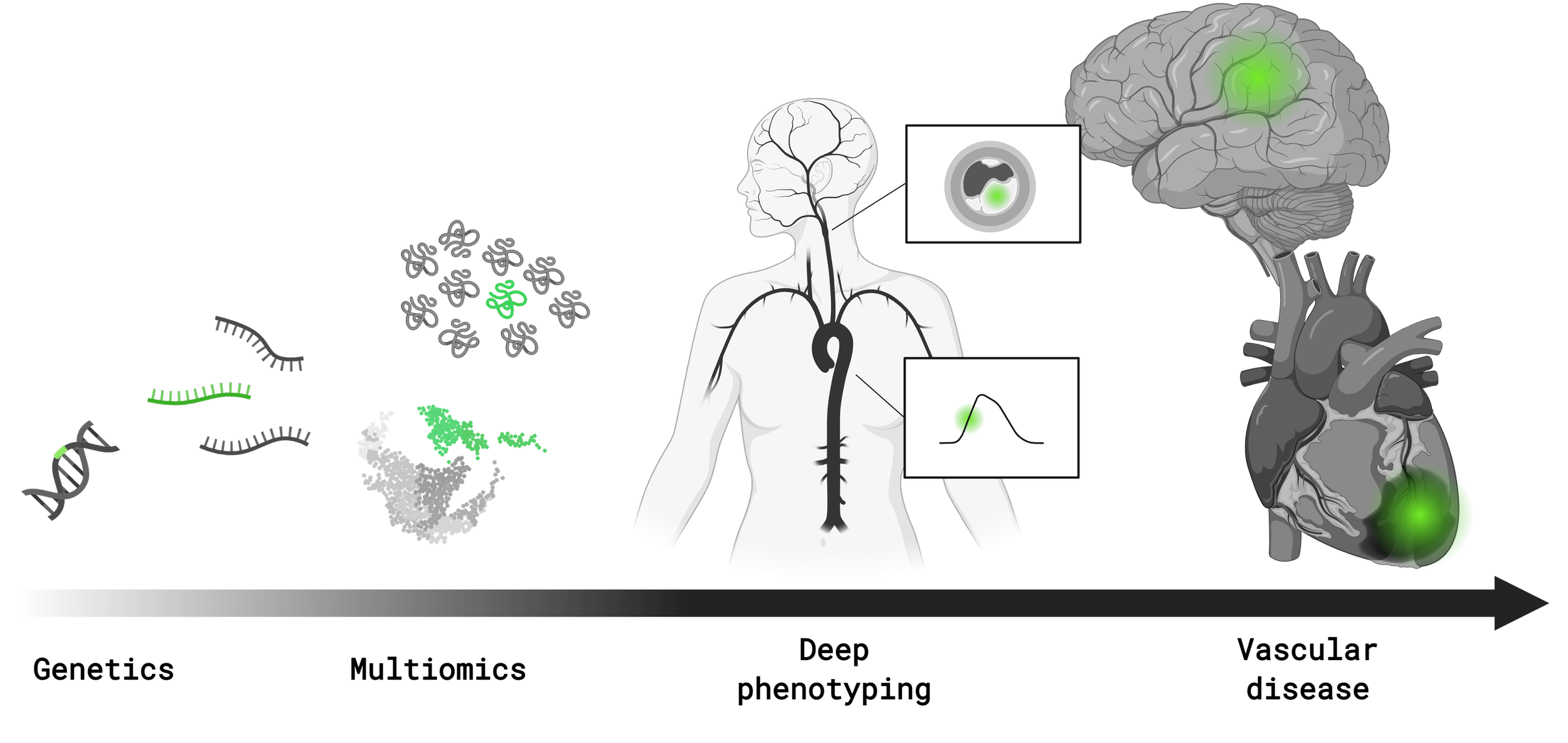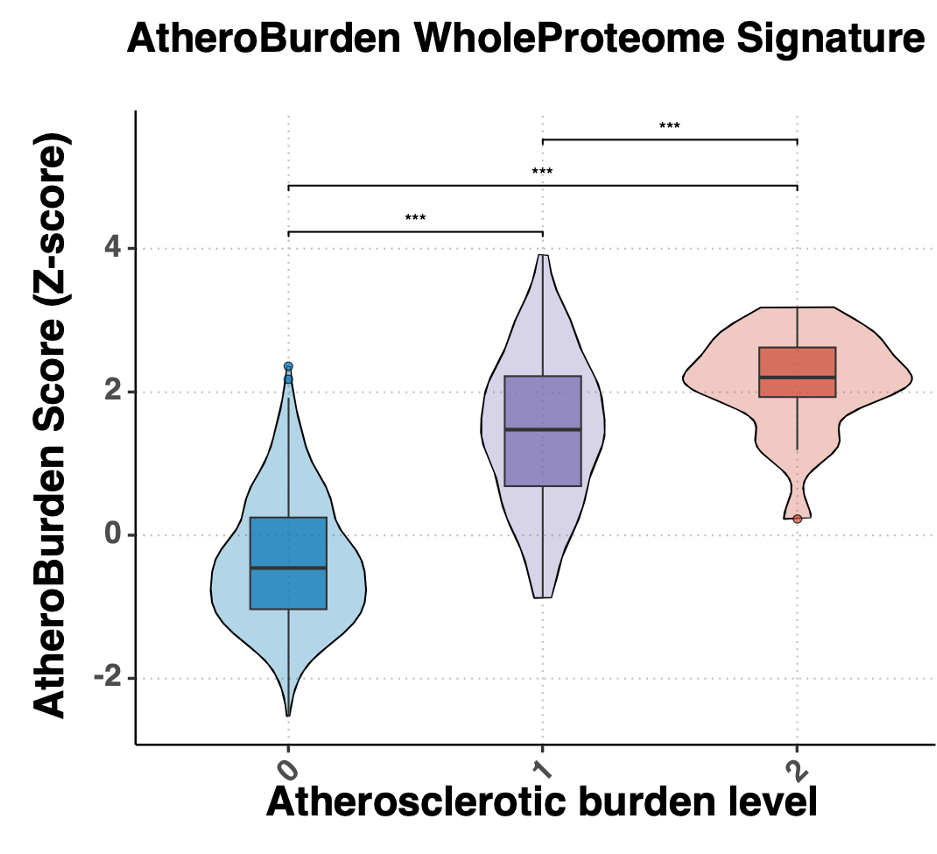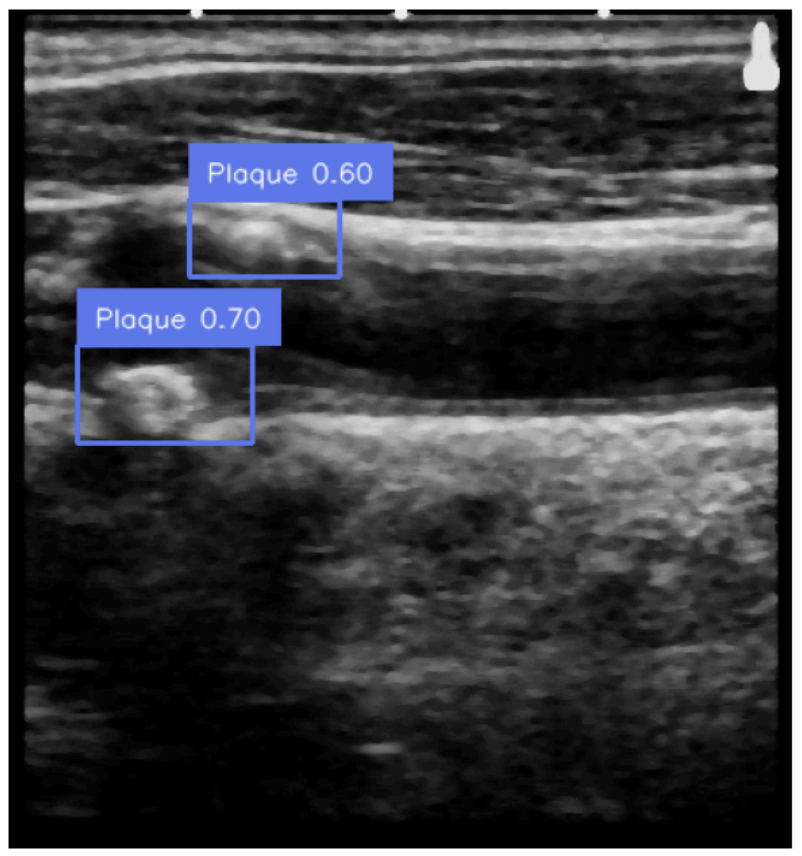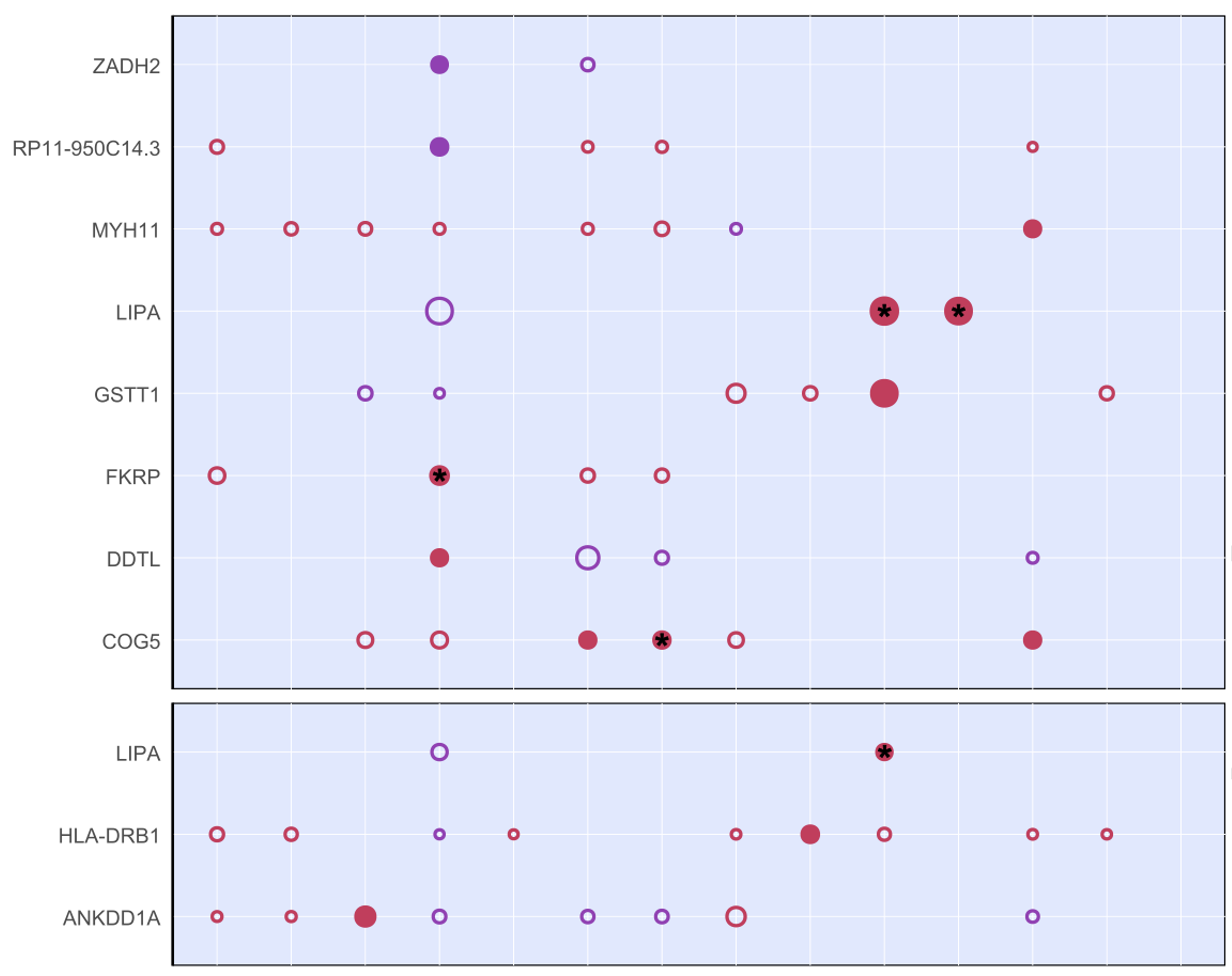Decoding vascular disease with genetics, omics, and deep phenotyping
At the Deep Vascular Phenotyping Lab, we integrate human genetics, multi-omics and AI-based phenotyping to uncover the mechanisms of atherosclerosis and vascular aging—paving the way for personalized prevention strategies and precision vascular medicine
Latest News from our Lab
Our Approach
Combining genetics, multi-omics, and AI to uncover therapeutic targets and biomarkers of vascular disease
We use human genetics to identify causal drivers of vascular disease and de-risk drug development, apply multi-omics to human vascular tissue to map molecular signatures of pathology, and leverage AI-based phenotyping in large-scale cohorts to develop tools for personalized risk prediction.

Research Themes
-

Human genetics for drug target discovery and validation
We explore the genetic architecture of vascular disease by linking variants to relevant traits through genomic studies. Our goal is to detect causal mechanisms and prioritize drug targets.
-

Mapping vascular pathologies with multi-omics data profiling
We generate high-throughput multi-omics data from human atherosclerotic plaques collected through our AtherOMICS biobank to map the molecular changes driving vascular disease progression.
-

AI-based vascular phenotyping for personalized risk stratification
Using AI on large-scale population-based data, we derive early endophenotypes of vascular disease. These phenotypes serve as subclinical biomarkers and proxy traits in genetic and omics research.
Our work has been featured in
Featured Publications
Why This Work Matters
Cardiovascular disease remains the number one cause of adult disability and death worldwide
We aim to (i) detect and validate novel targets for cardiovascular disease, and (ii) develop novel biomarkers of vascular pathologies. Our work is deeply translational—bridging discovery and application to deliver actionable drug targets and precision tools that can benefit patients.




